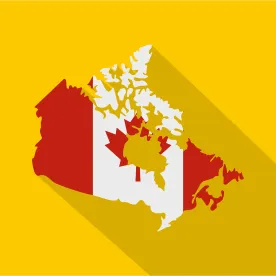On April 24, 2017, the U.S. Department of Commerce (DOC) announced preliminary countervailing duties (CVDs) on Canadian lumber imports. Among the investigation respondents, West Fraser received the highest rate of 24.12%, followed by Canfor at 20.26%, Tolko at 19.5%, Resolute at 12.82% and J.D. Irving at only 3.02%. All other producers in Canada will be subject to the “all others rate” of 19.88%, which is a weighted average of the CVDs levied on the respondents. The DOC noted in its release that imports of softwood lumber from Canada were valued at an estimated $5.66 billion in 2016.
In addition, the DOC preliminary found that “critical circumstances” exist with respect to J.D. Irving and all companies subject to the “all others rate”, which means the duties will apply retroactively for 90 days for all Canadian producers other than Canfor, West Fraser, Resolute Forest Products and Tolko. Producers will be forced to pay the CVD rate on all sales dating back to early February. DOC Secretary Wilbur Ross has stated that he expects this retroactive charge to total approximately $250 million.
The DOC plans to announce its final countervailing duties determination on September 7, 2017.
On or about June 23, 2017, the DOC is also expected to announce anti-dumping duties (ADDs). If the DOC finds that Canadian softwood lumber exports are being sold in the U.S. for less than fair market value, it will impose ADDs, which when combined with the CVDs, could raise the overall duty rate on Canadian exports above 30%.
The softwood lumber dispute revolves around the expiration of the Canada-U.S. Softwood Lumber Agreement (Agreement) on October 12, 2015, which began a one-year truce during which the countries tried to agree to a new deal. The expired Agreement ended a lengthy trade dispute between the two countries during which the U.S. collected approximately $5 billion in ADDs and CVDs from Canadian producers. As officials between Canada and U.S. failed to reach a new deal before October 12, 2016, the U.S. Lumber Coalition was free to initiate another round of litigation against Canadian producers. An association of U.S. lumber industry companies and associations – the Committee Overseeing Action for Lumber International Trade Investigations or Negotiations – filed the softwood lumber petition last November after the expiration of the litigation standstill.
The goal of CVDs proceedings (and the ADDs that likely will follow in June) is to have Canada adjust or eliminate its allegedly subsidized lumber industry. It is argued that this would open the industry up to fair market prices where the competition would drive prices to a level of home affordability. The Trump Administration has also openly discussed opening up more U.S. lands to logging and forestry to supply U.S. demand.
The U.S., and particularly DOC Secretary Wilbur Ross, has used softwood lumber as an example to demonstrate “the problems” with NAFTA and the Canada-U.S. free trade relationship. On a broader level, the U.S. position on softwood lumber is designed to eliminate unfair trade practices wherever U.S. officials see them. Softwood and supply management are amongst the top of the U.S.’s list of issues with Canada. As we expect NAFTA negotiations to launch in the coming seven to ten days, many believe this to be the “opening salvo” of the Trump Administration. Additionally, the Trump Administration needs the support of key members of the Senate Finance Committee (which controls trade) where nine key votes (including Ranking Member Wyden) are from softwood lumber states, as is the Chairman of the House Trade Subcommittee.
The softwood lumber dispute will be of particular concern to contractors in the U.S. with fixed-price contracts that are based on pre-preliminary CVD pricing. This is especially so in light of the finding of “critical circumstances” and the imposition of retroactive CVDs to the beginning of February 2017. While the final results of the investigation are expected later this year, many believe that we are likely to see a negotiated settlement between Canada and the U.S. that will carry major implications for Canadian producers and U.S. importers and consumers.
Dylan Augruso is the author of this article.



 />i
/>i

